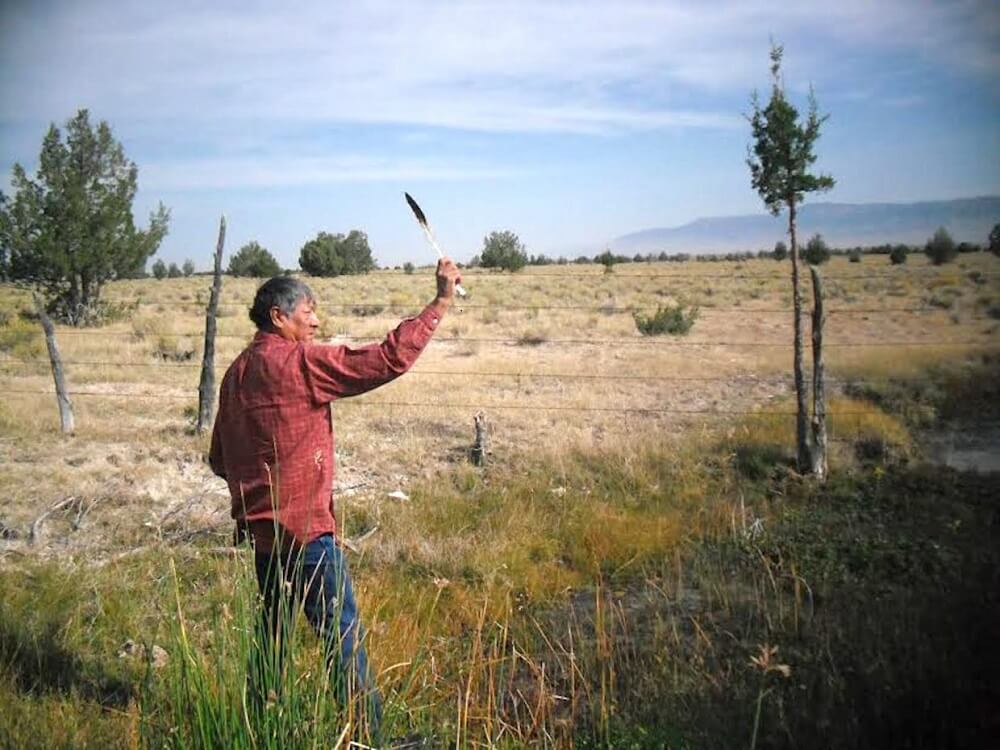6:49
News Story
Swamp cedar protection bill approved over state objections, supporters urge governor to sign it
A bill that would strengthen protections for the swamp cedars in the Spring Valley area of White Pine County considered sacred to Shoshone tribes has passed both chambers of the Nevada Legislature.
Now tribes and others supporting the legislation are urging Gov. Steve Sisolak to sign it into law.
Assembly Bill 171 would make it illegal to cut or damage any of the Rocky Mountain junipers that grow in an area known locally as the swamp cedars without a permit.
Several state agencies, including the Nevada Division of Forestry, the Nevada Division of Natural Heritage, and the Nevada State Historic Preservation Office argued in a letter to a legislative interim committee in January that state protection for the swamp cedars “is not the appropriate path,” adding that protection of the swamp cedars is better left to the Bureau of Land Management (BLM).
Earlier this month Bradley Crowell, the director of the Nevada Department of Conservation and Natural Resources, testified during a legislative hearing that the department “supports the spirit and intent of the bill” but was concerned about what precedent the bill would establish for other unique natural resources, calling it a “slippery slope,” and echoed the recommendation that protection of the swamp cedars should be left to the BLM.
That remains the department’s position, spokeswoman Samantha Thompson said Thursday.
Sisolak’s office did not respond to questions about whether he would sign the bill. The measure was passed May 17, and the governor has five days to act on it once it reaches his desk. The bill’s status as of Friday was listed only as enrolled, with no indication if it had yet been delivered to the governor’s office.
The legislation and an accompanying resolution (which does not require the governor’s approval) were largely carried by Democratic Assemblyman Howard Watts, chair of the Assembly’s Natural Resources Committee, and passed the Assembly along party lines by a vote of 29-13 with no Republicans voting in favor. In the Senate, the bill passed 12-8, with all but one Republican, Ira Hansen, voting against the bill.
“The passage of these bills by both chambers of the Nevada Legislature underscores a significant moment in our history,” Watts said in a statement.
“The site has been home to much conflict over many years. But it is also a place of momentous spiritual and cultural value for those who have been here longest. It has been an honor to work on this proposal with Native communities and my legislative colleagues.”
Taylor Patterson, director of the Native Voters Alliance Nevada, praised lawmakers and said it was encouraging to see legislation focused on Native issues receive support from the Legislature.
“We are excited to see AB171 move through the Legislature and onto the Governor’s desk. We urge Governor Sisolak to sign this bill and protect these sacred Swamp Cedars,” Patterson said in a statement. “This area and the Swamp Cedars tell the story of the First People of Nevada. Without protection, Nevada would lose an integral piece of its history.
“Hopefully, Governor Sisolak will honor the legacy of the Western Shoshone and Goshute and protect the sacred Swamp Cedars.”
In 2017, the Goshute, Ely and Duckwater tribes won recognition of the site as a Traditional Cultural Property from the National Park Service, but that designation provides little to no legal protections for the swamp cedars — known as Bahsahwahbee or “Sacred Water Valley” in Shoshone — as they face threats from climate change, drought and over-pumping of groundwater.
Chairman Rupert Steele of the Confederated Tribes of the Goshute Reservation said he hopes Sisolak will sign the bill into law.
“These bills help ensure that we’re doing all we can to preserve lands and waters that my people have been using since time immemorial,” Steele said. “We look forward to working with (the Nevada Department of Conservation and Natural Resources) and officials in Washington D.C. as we continue our efforts to preserve Bahsahwahbee in perpetuity.”
For tribes, the area serves as a living memorial of three separate massacres of during the 1800s, where several hundred Native people were killed by the military and local settlers, according to an application for a Traditional Cultural Property designation from the Goshute, Ely and Duckwater tribes.
A military attack in 1859 killed an estimated 525 to 700 Native people in one of the largest massacres of Native people in U.S. history. A second military attack in 1863 killed about two dozen more, while a third mass killing in 1897 was committed by a self-appointed militia.
Native peoples hold that for every one of their ancestors killed during the massacres, a tree grew in their place.
Delaine Spilsbury, an Ely Shoshone tribal elder and a descendant of one of the two 10-year-old girls who survived the 1897 massacre, has been fighting for the protection of the swamp cedars for decades.
“While Native people do not live at the site, we still use it and we want future generations to have the same opportunities. But man-made and natural threats jeopardize Bahsahwahbee’s future,” Spilsbury said in a statement. “That is why we asked lawmakers to act. Growing up, I never could have imagined the Nevada Legislature recognizing my family’s history and spirituality in this way. We have come a long way. But we have further to go.”
The related measure passed by lawmakers and that does not require the governor’s approval, Assembly Joint Resolution 4, asks the U.S. Congress to grant the swamp cedars greater federal protections.
Our stories may be republished online or in print under Creative Commons license CC BY-NC-ND 4.0. We ask that you edit only for style or to shorten, provide proper attribution and link to our website. AP and Getty images may not be republished. Please see our republishing guidelines for use of any other photos and graphics.




